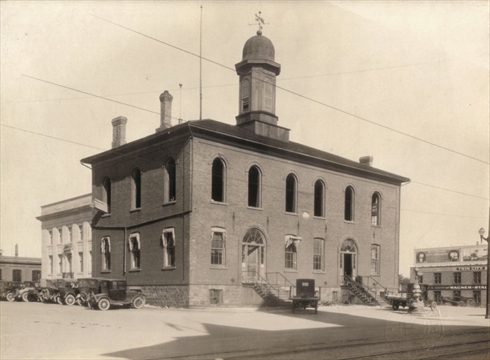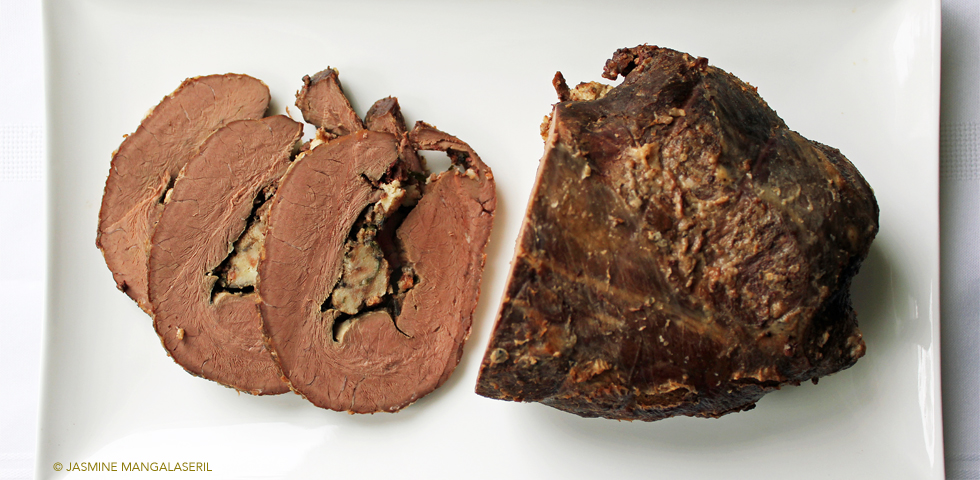
Prioritising and Hydro Radials
The radials project chugged along, and Berlin, Ontario hosted an important meeting to discuss the nitty-gritty of the project. Sir Adam Beck tried to temper the gathering’s expectations and placed the project into the grander context of government priorities: “It is our duty to strain every effort to clothe and equip and maintain the army. Next to that comes our agriculture, next to that comes manufacturing, but we must keep up the earning capacity of the people.” After all, the government could decide whether or not the Radials project was a go.
There’s whiskey in the jar-o
A change came to the United Kingdom’s warfare In the late 19th century, when they replaced gunpowder with cordite. Cordite production needed acetone, which was in short supply, but in 1912, Chaim Weizmann discovered a bacterial fermentation process that replaced cordite’s acetone. In 1915, the British government gave him a laboratory at the Lister Institute and industrial plant at Nicholson’s Gin Distillery to continue his work. By 1916, the British government commandeered some of its distilleries for his maize-based fermentation. Word spread across the pond that Canadian distilleries may also be requisitioned to augment British and French cordite production. With teetotalism claiming more than half of Ontario, this news may have relieved local concerns about Waterloo’s Seagram distillery.
Berlin’s first alien interned
Fifteen months earlier, Paul Zibell, a German-born national, registered as an alien enemy (as per the order-in-council), but failed to continue his check-ins. He was the first person from Berlin to be rounded up and escorted to the Stanley Barracks (Toronto’s internment camp).
Scatter his enemies, and make them fall
Twenty-or-so khaki-clad men from the 118th Battalion attended St. Matthew’s Sunday morning German language service. Whether or not their presence was noticed, I can’t say (but after last week’s antics, the congregation may not have been fully at ease). After Reverend Tappert ended service and the recessional hymn began, the soldiers rose to their feet, stood at attention, and sang the national anthem. The organist immediately took their lead and peeled out John Bull’s anthem as the voices of the soldiers, choir and a few of the congregation “rang forth and fairly made the walls of the church ring to the great and glorious strain of God Save the King.”
Tappert, a German-born US citizen (and cause of much consternation), was not an alien enemy and couldn’t be whisked away like Zibell. That said, the Reverend solemnly promised to resign his position at St. Matthew’s and return to the US.
God help the manufacturers if you don’t change it
The day after a Berlin News-Record ran an editorial critical of the “self-constituted association of citizens” and recommended aldermen not act rashly, the citizens’ resolution to change the city’s name was on Council’s agenda. Two motions went before Council, detailed in a comment-by-comment, whinge-by-whinge, snort-by-snort Hansard in The News-Record.
“What about my motion?” groused Alderman WG Cleghorn when amalgamation was discussed first. “…The Waterloo Board of Trade are meeting this evening and asked me to telephone them as soon as we have decided to change the name…” Apparently the order of proceedings was inconvenient for whatever the Berlin Board of Trade man planned.
After to-ing and fro-ing, the amalgamation motion was withdrawn, and after more fro-ing and to-ing the name change motion passed 13:2.
Agitation for amalgamation
With the name change motion out of the way, Council took the first tentative steps towards amalgamation and agreed to appoint a committee to study the issue. This wasn’t the first time unifying the two communities was discussed. As word buzzed about the county, it seemed as if Waterloo’s “old prejudices” against merging with Berlin were gone—provided that “Waterloo” be the go-forward name.
The nerve of Toronto!
Regardless of what some may say, Lochead was serious about protecting and defending his men, as Toronto City Council’s Controller Cameron soon found out. Cameron was on a mission to take up cases of Toronto men who enlisted in other cities. Parents received letters urging them to pressure their sons to do the right thing and fill out their home battalions, not those in other communities.
A few of those lads were here in the 118th, which prompted Lochead to weigh in: “Controller Cameron seems to forget that a good percentage of the Toronto battalions are recruited from cities, towns and districts throughout Ontario—or if he is aware of that, he is somewhat of a grab-all that thinks Toronto is the only spot on the map where soldiers should join?”
With friends like these…
Neighbouring community newspapers made merry with Berlin’s issues. The Hamilton Times called for a boycott as a “stand against those seditious residents.” The Brantford Expositor argued for a special war tax to compel those who would not fight to pay. (Yet Simcoe’s Judge Barron called for a swift end to pro-Germanism as the “repentance of the pocket and not of the heart” when referring to Berlin’s support of the Patriotic Fund). Rumours swirled around Guelph that the 118th’s barracks blew up and left many dead. Meanwhile, according to The Berlin Daily Telegraph, The Galt Reporter “seems to delight in giving this city a black eye. The war is hardly to be expected from such a near neighbour.” Oh, Galt.
Want a bit more information?
The Recipe

While home economy would be more of a concern later in the next year or so, home cooks were already adept at using cuts that many of us don’t—or won’t—consider today. Recipes using offal seem more prevalent then than in today’s Canadian cookery books. It’s a shame because cuts (if that’s the right word) like heart are quite economical–one heart could easily serve six people.
Matt, my butcher, procured a pumper, cleaned it out, and gave me some good advice about preparing it. There were times I wished I had a second set of hands to gather the escaped bits of stuffing as I trussed it up, but it is a one-woman job. When done, its flavour was rather like a strong venison, with a dense, liver-like texture.
Recipe source: 1 February 1915, The Globe
You wash the heart carefully and remove all the veins and clotted blood and then stuff it with a bread dressing made in your own favourite way. Sew the heart together at the top, sprinkle salt and pepper, roll in flour, and brown in hot fat, then place in a small deep baking pan. Half fill the pan with boiling water, cover it closely and bake the meat for two hours, basting it every quarter hour. You may have to add more water. When you have removed the heart from the pan, thicken the liquor with flour mixed to a thin paste, using about a dessertspoonful of flour to each cup of liquid. Allow this to cook until the flour has browned and expanded, then season it, pour around the heart and serve.
Braised stuffed beef heart (Modern equivalent)
Yield: 6 servings
| 1 | 1 | 1 | Beef heart (approximately 1.9kg/4lbs), trimmed and butterflied (see notes) |
| 375ml | 375ml | 1-½ cups | Bread stuffing (see notes) |
| Salt | |||
| Pepper | |||
| 60g | 90 ml | 6 tablespooons | Flour, divided |
| Oil, for frying | |||
| Water (see notes) |
Soak the heart in a pot of cold water for 30 minutes. Drain the water and pat the heart dry (inside and out, including the ventricles (really, no time to get squeamish)).
It’s probably best to think of this as a meaty jellyroll or an awkwardly-shape beef rouladen. Lay it on your board, chamber-side up and season with salt and pepper. Spoon the stuffing onto the meat, tucking it into the various nooks and crannies. Roll it up as you would a jellyroll (or a rouladen). Wrap and tie it tightly, as you would a roast, or if you have a trussing needle, sew the seam.
Preheat the oven to 150C/300F. Set a kettle to boil.
Season two tablespoons of flour with salt and pepper and roll the meat bundle in it. Sear the heart in a stovetop-safe roaster or a dutch oven—of course, use a brasier if you have one. Remove the browned meat to a plate.
Pour a bit of boiling water into the pan and scrape up the fond. Return the meat to the brasier and pour enough water until the meat is submerged halfway. Lid the pan or tightly seal it with foil and braise for 1-½ to 2 hours. If necessary, baste the meat with the pot liquor every half hour or so—topping up the water as necessary.
When done, remove the meat to a plate and tent it with foil and let it rest for 10 minutes. Meanwhile, set your brasier back on the hob, skim off the fat and bring the pot liquor to a boil.
For the sauce: Dissolve four tablespoons of flour in a half cup of cold water, then stir into pot liquor. Let the pan boil for about five minutes so the flour is cooked through and the sauce is thick. Serve with the meat.
Notes
- About beef hearts:
- As heart and other offal go through extra food inspection checks, ask your butcher how long it could take to bring one in—mine took about a week.
- If you’ve never prepared a heart before and are a bit squeamish, unsure, busy, or simply don’t feel like doing it, ask your butcher to clean, trim and butterfly the heart for you.
- If you want to give it a go yourself, trim away all the fat on the outside and remove the silverskin. Butterfly the heart and remove the arteries and blood clots.
- I found the pan liquor very, very weak and didn’t use it. Instead, I reheated some leftover mushroom gravy.
- What I’d do differently:
- Add more flavour: Instead of seasoning the meat and flour with salt and pepper, use a favourite steak rub
- Add more flavour: Instead of braising the meat in water, use beef stock or a combination of beef stock and stout or beef stock and red wine. Mix in a spoon of tomato paste with the stock.
- Add more flavour: Make a trivet out of carrots and rest the browned meat on it for braising. Add some onion wedges, garlic cloves, a bay leaf, some thyme and rosemary.
- Here’s the stuffing I made:
- Two slices of buttered bread, cubed into 1cm (½”) pieces and toasted in a 140C/275F oven for 20 minutes. Salt, pepper, onion powder, garlic powder and thyme were mixed into the butter.
- A good handful mushrooms, finely chopped and a finely chopped rasher of bacon sautéed with shallot, garlic, salt, pepper, a few drops of balsamic vinegar, and a little minced parsley.
- When cooled, mix the croutons with the cooked mushrooms. Mix in half a beaten egg and enough milk to barely dampen the mixture.
- Procurement (in Waterloo Region)
- These two butchers have never let me down:
